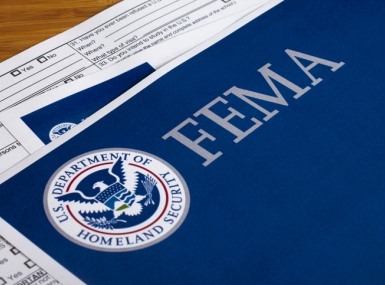Building coastal resilience in the Gulf of Mexico
Upcoming Events
Related News

With a goal of building greater understanding on joint issues of concern, the NACo Gulf States Counties and Parishes Caucus (GSCPC) met for the first time June 11 with the Gulf of Mexico Alliance, a state-led partnership network established by the five Gulf State Governors in 2004, at their 2019 All-Hands Meeting. The two groups discussed their origins, their current priority issue areas, how those priorities align and how they might partner and continue to engage with one another moving forward.
The GSCPC, which is open to all elected county officials in Alabama, Florida, Louisiana, Mississippi and Texas, was established in response to the 2010 Deepwater Horizon Oil Spill. It works to promote a clearer understanding of mutual problems of Gulf Coast counties and parishes and their citizens; to establish a single source of information concerning county and parish governments in the Gulf region; and to advocate on behalf of those residing in Gulf Counties and parishes before federal and state governments and other county officials.
Similarly, the Gulf of Mexico Alliance (GOMA) works to sustain and enhance the environmental and economic health and resources of the Gulf of Mexico through regional collaboration. They partner with the federal government, the five Gulf state governments, academic organizations, non-profit organizations and businesses, according to their website. To date, local governments have not been recognized as an official partner. The hope of this meeting was to build greater understanding on joint issues of concern and create lasting engagement between GOMA and county governments.
GOMA’s six priority issue areas — data and monitoring, education and engagement, habitat resources, water resources and wildlife and fisheries — align with GSCPC’s more legislation-focused issue areas — hurricane preparedness, overall health of the Gulf, federal assistance for flood control and coastal erosion mitigation efforts, continued support for the Gulf of Mexico Energy Security Act and Resources and Ecosystems Sustainability, Tourist Opportunities and Revived Economies of the Gulf Coast States Act and reform of the National Flood Insurance Program, Waters of the U.S., and U.S. Army Corps of Engineers’ mitigation program.
GSCPC members shared their stories of collaboration and the importance of engaging local government in state and federal policy discussions. The caucus members stressed:
Every issue is a local issue and has to be implemented at the local level, therefore state and federal policies need to be clear, understandable and clearly implementable.
We all share the same body of water and can learn from and help one another by sharing our stories – through science-based communications.
GSCPC is a powerful lobbying force that could be useful to further any future joint GSCPC-GOMA priorities since most of the partners are state organizations that cannot lobby. All levels of government — and their partners — need work together.
In follow-up, one GOMA partner asked how might funding organizations better share funding opportunities. GSCPC leaders stressed the need to always include a short synopsis at the top that highlights eligibility, funding levels and overall purpose of a grant so county leaders do not spend valuable time exploring a grant for which they are not eligible and/or do not have the capacity to pursue. They also stressed the resource they have in NACo and state associations of counties which can share funding opportunities through their outreach channels, and the need for support in writing a grant for counties who do not have that expertise on staff.
The conversation concluded with the identification of future engagement opportunities and mutual excitement and interest in working together moving forward.
Attachments
Related News

Cross-training helps county 911 scale up for big emergencies
With training, Howard County, Md. staff help filter and respond to non-emergency requests for information and assistance during period of heavy 911 call volume.

States file lawsuit challenging FEMA’s new rules on emergency management grants
On November 4, a coalition of 12 states filed a lawsuit against the U.S. Department of Homeland Security (DHS) and the Federal Emergency Management Agency (FEMA), alleging that recent changes to key emergency management grants are unlawful and could disrupt state and local preparedness efforts.

County Countdown – Nov. 4, 2025
Every other week, NACo's County Countdown reviews top federal policy advocacy items with an eye towards counties and the intergovernmental partnership.